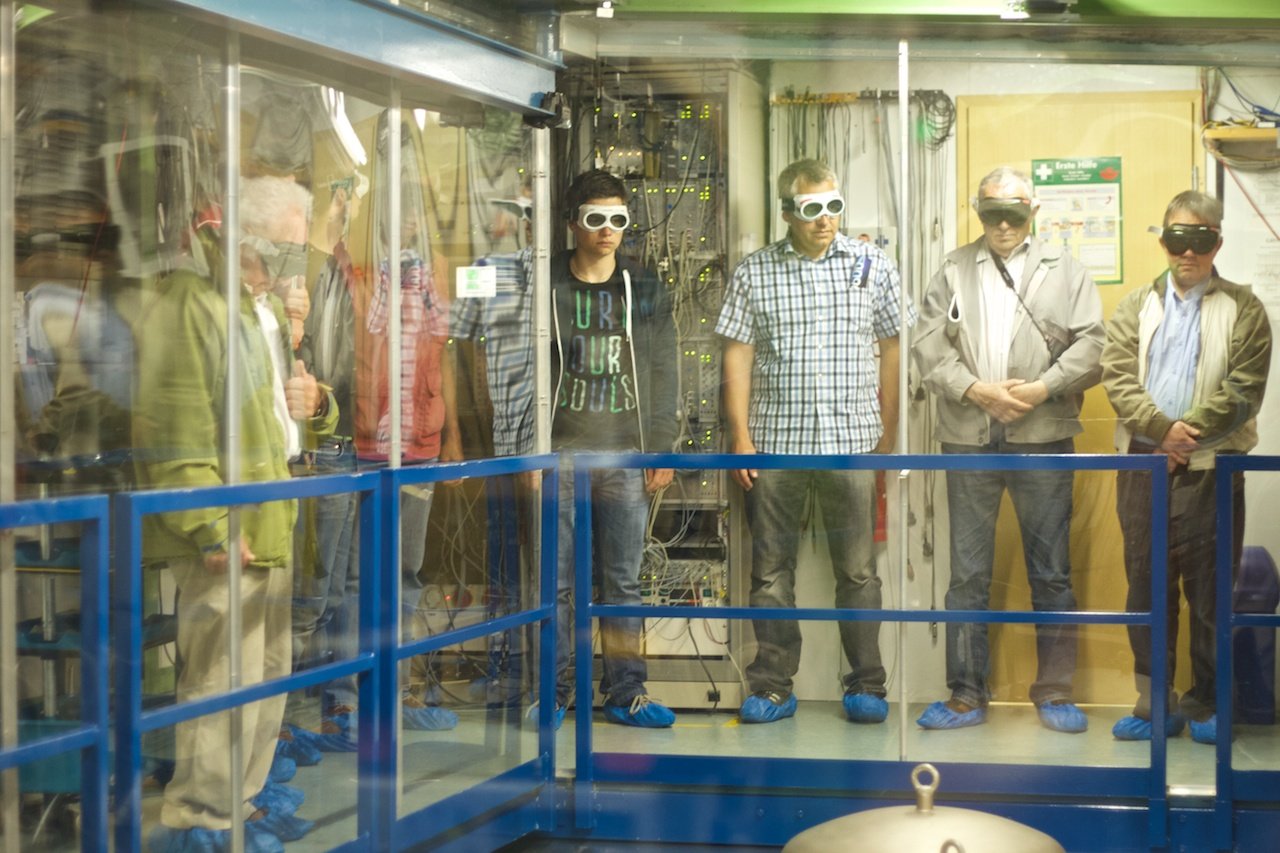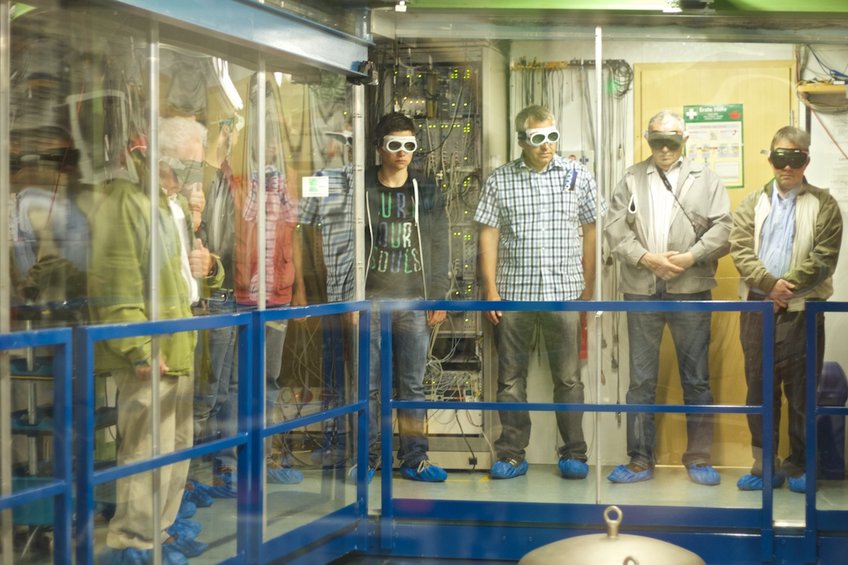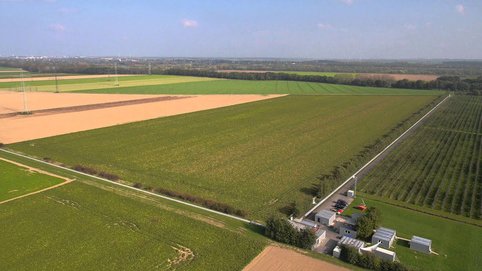Open Day at GEO600 on 30 July 2017
Visit the gravitational-wave detector near Sarstedt and experience cutting-edge research at first hand
On Sunday, 30 July 2017, the Max Planck Institute for Gravitational Physics and the Institute for Gravitational Physics of Leibniz Universität Hannover are inviting people to visit the Anglo-German gravitational wave detector GEO600 near Sarstedt. Between 11a.m. and 4p.m., researchers at the detector site inform the public about the new era of gravitational-wave astronomy and the crucial contributions of GEO600, a think tank of international research.
What? Open Day at the gravitational-wave detector GEO600 with tours, exhibits, and short presentations. All interested are invited!
When? Sunday, 30 July 2017 between 11 a.m. and 4 p.m.
Where? Ruthe near Sarstedt, please come by car and/or bicycle as described on the right.
A new era of astronomy
With the first direct measurement of gravitational waves in September 2015, for the first time a new window offered a glimpse of the invisible “dark” side of the universe. Since then two additional gravitational-wave signals from merging black hole pairs have been detected – a new era of astronomy has begun. GEO600 is playing an important role here, developing and testing new technologies for the detection of gravitational waves. These technologies are very important for the sensitivity of the advanced LIGO detectors in the US, which measured the gravitational waves. The first gravitational-wave detection is a hot candidate for a Nobel Prize in Physics.
Cutting-edge research at first hand

The Open Day on 30 July 2017, which will take place between 11 a.m. and 4 p.m., will give visitors first-hand information on the basic research and day-to-day work of the gravitational wave detector GEO600.
Optional guided tours of the detector premises will provide an insight into the heart of the highly sensitive measurement facility (visitors must be at least 16 years of age), while the event itself will be rounded off with exhibits and the chance to attend brief talks and converse with scientists.
Please note that the central building of GEO600 is a laser protection area and legal restrictions require visitors to be at least 16 years of age. All other stations on the GEO600 site have no age restrictions.
Technology development at GEO600
The GEO Collaboration, a team of Max Planck, Leibniz Universität Hannover and UK researchers, has been operating the GEO600 gravitational-wave detector south of Hannover, Germany, since the mid 1990s. GEO600 is a development center for novel and advanced technologies in the international gravitational-wave research community. Many key technologies that enable the unprecedented sensitivity of LIGO and its discoveries have been developed and tested by GEO600.
AEI researchers together with the Laser Zentrum Hannover e.V. also developed, built, and installed the high-power laser systems at the heart of the LIGO instruments. Crucial improvements in the optical measurement principle such as power and signal recycling where first demonstrated in GEO600 as a large gravitational-wave detector.
Quantum mechanical tricks for the future of gravitational-wave astronomy
GEO600 is the only gravitational-wave detector worldwide using “squeezed light” to mitigate fundamental quantum noise effects and improve its sensitivity at high frequencies. In the future all ground-based gravitational-wave detectors will use squeezed-light sources similar to that at GEO600 to further improve their sensitivity.
International research
GEO600 is jointly operated by the Max Planck Institute for Gravitational Physics in Hannover, the Leibniz Universität Hannover and research groups at the Universities of Cardiff and Glasgow. It is funded by the Federal Ministry of Education and Research, the Federal State of Lower Saxony, the Max Planck Society, the British Science & Technology Facilities Council and the Volkswagen Foundation.
Getting there by bike
The GEO600 premises are situated to the south of the Leine River and can be ideally reached by taking a slight detour from the “Grüner Ring” cycling route. A visit to GEO600 is best combined with a bike ride, as you can cycle directly to the central building of the GEO600. A bike map has been provided on the right column of this page for orientation purposes.
Travelling from Hannover by car and where to park
By car: Take the B6 (Messeschnellweg) southbound and take a right at “Sarstedt/Heisede”. Turn right in the direction of Heisede, then left at “Schulenburg/Ruthe”. In Ruthe, turn right. After the Leine crossing, turn right at the EXPO sign (or at the white sign for “Universität Hannover/Versuchsgelände” or the green sign for “Schäferberg”).
Please do not drive directly to the central building of GEO600. When travelling by car, please use the car park at the Lehr- und Forschungsgut Ruthe at the University of Veterinary Medicine Hannover (Tierärztliche Hochschule Hannover). You can park here at the manor house (see the map on the right) or at the poultry houses (located further down the road). From here, it is a short walk of about a kilometre to the central building of the gravitational wave observatory along the 600-metre laser measuring circuit of GEO600. You will find information boards along the path.

